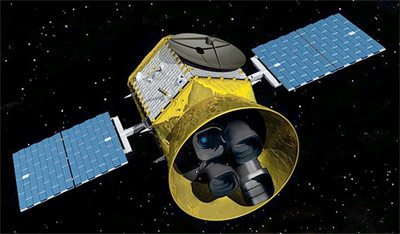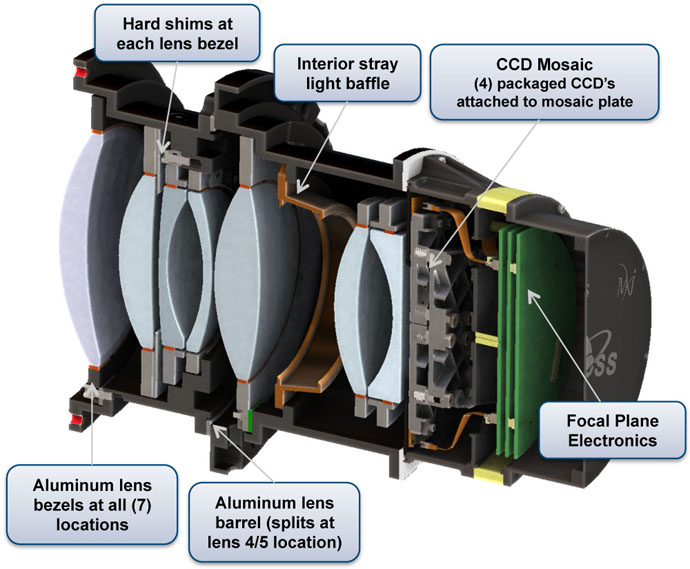TESS has a group of four wide field cameras each with four large CCD imagers that will collect photometric data at a relatively high cadence, and therefore generate a ton of data.
above: "TESS (Astro-EX 1) [MIT]" From Gunter's Space Page.
TESS' four cameras are based on lenses, and so unlike large telescopes with secondary mirrors suspended on "spider" mounts, I'm not aware of anything in the optical path that could cause a four-fold "star pattern" for bright stars.
The cameras do collect images with CCDs and so we can expect those artifacts.
But when I look at the following images (top one is 2x and sharpened) from Axios' NASA's new planet-hunting spacecraft sends back first images it looks more like scattered light from an improperly cleaned lens, with some remaining horizontal and vertical streaks from a dirty shirt tail.
In fact one of the biggest advantages of using lens-based telescopes for deep-sky imaging is the minimization of scattered light. For example the Dragonfly Telescope described in the question What (actually) is the “deprojected half-light radius” of this almost-all-dark-matter Galaxy? (also Petapixel and U. Toronto)
Question: What is going on here? In addition to the long vertical line that I assume is a well-understood CCD artifact, there are four more fuzzy, diffuse, slightly curved lines. What is causing those?
See also NYTimes: NASA’s TESS Starts Collecting Planets
Images from Axios (of all places!):
below x2: "NASA's TESS spacecraft captured this swath of the southern sky in its “first light” science image on Aug. 7, 2018." Photo: NASA/MIT/TESS
below: "The TESS satellite captured this strip of stars and galaxies in the southern sky during one 30-minute period on Tuesday, Aug. 7. Notable features in this swath of the southern sky include the Large and Small Magellanic Clouds and a globular cluster called NGC 104, also known as 47 Tucanae." Credit: NASA/MIT/TESS.







